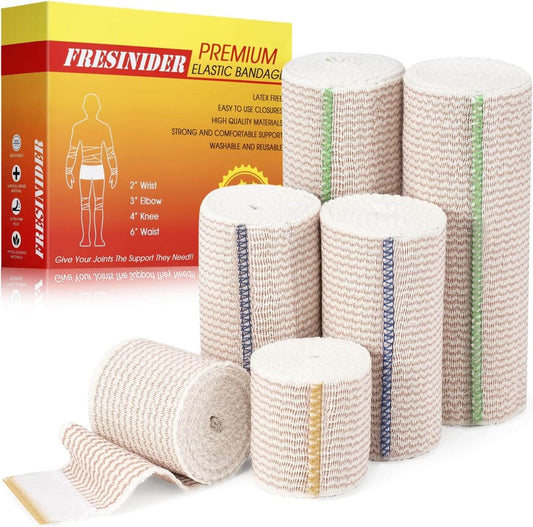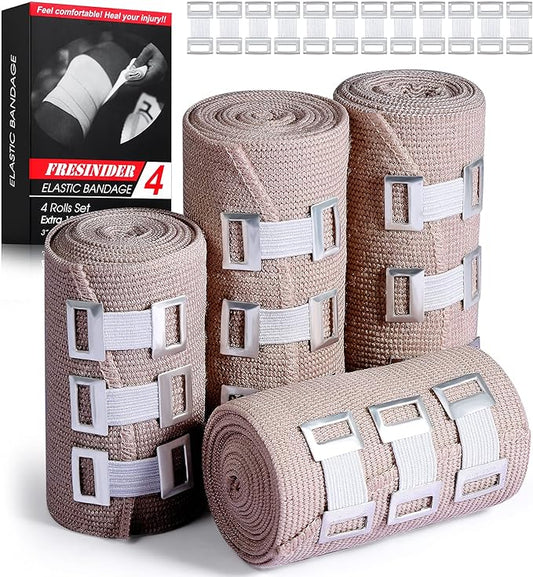Diabetic foot ulcers (DFUs) are challenging complications of diabetes. Due to neuropathy, poor circulation, and slower tissue repair, even small injuries can become persistent ulcers. Choosing the right wound dressing is essential—beyond covering a wound, a good dressing balances moisture, absorbs exudate, protects fragile skin, and supports healing.
Understanding Diabetic Foot Ulcers
Why do diabetic ulcers occur?
Diabetes can cause peripheral neuropathy (reduced sensation) and peripheral arterial disease (poor blood flow). Combined with high glucose impairing immunity, minor wounds can progress to ulcers.
Common risk factors
- Neuropathy (loss of protective sensation)
- Poor circulation
- Repeated pressure or friction on bony prominences
- Calluses, deformities, poorly fitting footwear
- Suboptimal glycemic control

Why DFUs are dangerous
DFUs heal slowly and are prone to infection. Appropriate dressings and pressure offloading reduce complications.
The Role of Dressings in DFU Care
Effective dressings should:
- Maintain moisture balance for moist wound healing.
- Absorb exudate and protect periwound skin from maceration.
- Provide a barrier against contamination to lower infection risk.
- Be gentle on fragile skin during removal.
- Cushion to reduce shear and friction.
- Allow reasonable wear time to minimize painful or disruptive changes.
Types of Diabetic Ulcer Dressings
No single dressing fits every ulcer. Choose based on size, depth, exudate level, infection status, and periwound condition.
1) Gauze and Traditional Dressings
- Pros: Inexpensive, widely available.
- Cons: May adhere to wound bed; frequent changes; limited moisture control.
- Best for: Temporary coverage or when advanced dressings are unavailable.

2) Hydrogel Dressings
- Pros: Donate moisture; rehydrate dry/necrotic tissue; support autolytic debridement.
- Cons: Low absorption; not for moderate–heavy exudate.
- Best for: Dry or necrotic ulcers.
3) Hydrocolloid Dressings
- Pros: Maintain moist environment; easy to apply; fewer changes.
- Cons: Generally not for infected or heavily exuding wounds; may be too occlusive.
- Best for: Shallow ulcers with low–moderate exudate.
Want to learn more about how Hydrocolloid Dressings work and when to use them? Click here for a detailed guide.
4) Alginate & Hydrofiber Dressings
- Pros: Highly absorbent; form a gel in contact with exudate; conform to irregular wounds.
- Cons: Require a secondary dressing; not for dry wounds.
- Best for: Moderate–heavy exudating ulcers.
5) Foam Dressings
- Pros: Strong absorption and cushioning; protect against pressure and friction; antimicrobial options (e.g., silver) exist.
- Cons: Higher cost; may limit direct visualization of the wound bed.
- Best for: Moderate–heavy exudate and pressure-prone areas (plantar surface, heel).
Interested in a full explanation of how Foam Dressings support wound care? Read our complete guide here.
6) Antimicrobial Dressings (e.g., Silver, Iodine, Honey)
- Pros: Help reduce bioburden in infected or high-risk wounds.
- Cons: Prolonged continuous use is avoided without clinical oversight.
- Best for: Suspected or confirmed infection, as part of a broader plan.
7) Advanced / Biological Options
- Examples: Skin substitutes, growth factor dressings; negative pressure wound therapy (NPWT).
- Pros: Can support stalled or complex wounds; promote tissue regeneration.
- Cons: Higher cost; require specialist care and monitoring.
- Best for: Chronic, non-healing, or complex ulcers under specialist guidance.
What Is the Best Dressing?
Not every diabetic foot ulcer needs the same dressing. The choice depends on wound depth, exudate level, infection risk, and the condition of the surrounding skin. Use the table below as a quick reference and consult a healthcare professional for personalized care.
| Wound Type / Condition | Recommended Dressing | Why This Works |
|---|---|---|
| Dry, shallow wound | Hydrogel dressings | Donate moisture to rehydrate tissue and support gentle (autolytic) debridement. |
| Light drainage | Hydrocolloid; thin foam | Maintains a moist environment while absorbing small amounts of exudate; fewer changes. |
| Moderate–heavy drainage | Alginate or hydrofiber (with secondary cover); foam | High absorbency limits maceration and protects periwound skin. |
| Infected or high-risk wound | Antimicrobial dressings (silver, iodine, medical honey) | Helps reduce bioburden; short-term use under clinical guidance. |
| Thick dead tissue / slough | Hydrogel; clinician-directed debridement | Moisture softens necrotic tissue, making removal safer and easier. |
| Malodor (smelly wound) | Medical honey or charcoal dressings | Controls odor and supports bacterial balance while managing exudate. |
| Fragile or sensitive periwound skin | Silicone-contact foam | Atraumatic removal reduces skin stripping and discomfort at dressing change. |
| Ulcer at a pressure point (heel/plantar) | Foam dressings plus offloading | Cushions and redistributes pressure; offloading is essential for healing. |
| Undermining or tunneling | Alginate/hydrofiber rope with secondary cover | Conforms to cavity wounds and wicks exudate from depth to surface. |
| Ischemic, dry black eschar | Keep dry and protected; urgent vascular assessment | Occlusion may worsen ischemia; needs specialist evaluation. |
Reminder: Dressing selection is only one part of DFU care. Combine it with pressure offloading, infection control, good glucose management, and regular follow-up with a wound-care professional.
Best Practices in Using Diabetic Ulcer Dressings
- Debridement: Remove necrotic tissue per clinician guidance to promote a healthier wound bed.
- Cleanse: Use sterile saline or appropriate solution as directed.
- Size correctly: Extend the dressing 1–2 cm beyond the wound edge to protect periwound skin.
- Avoid tight wrapping: Ensure circulation is not compromised; check for swelling, coolness, or color changes.
- Change frequency: Base on exudate and dressing type—daily for gauze; every 2–7 days for many advanced dressings.
- Monitor for infection: Watch for redness, odor, increasing pain, warmth, or purulent drainage and seek prompt care.
- Offloading is essential: Use footwear, orthotics, or casts to reduce pressure on the ulcer.
- Systemic care: Maintain glucose control, optimize nutrition, and address vascular issues.
Frequently Asked Questions (FAQ)
What is the best dressing for diabetic ulcers?
There is no single best dressing. Selection depends on the ulcer’s characteristics. Foam, alginate/hydrofiber, and—when appropriate—antimicrobial dressings are commonly used.
How often should dressings be changed?
It varies by dressing and exudate level. Gauze often needs daily changes; many advanced dressings can remain for 2–7 days if exudate is controlled.
Can I manage a diabetic ulcer at home?
Basic care and dressing changes can be done at home, but every DFU should be assessed and monitored by a healthcare professional.
When should I see a doctor urgently?
Seek prompt care if there is spreading redness, swelling, fever, foul odor, increasing pain, or if the ulcer fails to improve.
Conclusion
Diabetic ulcer dressings help manage moisture, absorb exudate, protect fragile skin, and reduce infection risk. There is no one-size-fits-all option—choose based on the wound’s characteristics and always combine with offloading, glucose control, and professional guidance.






